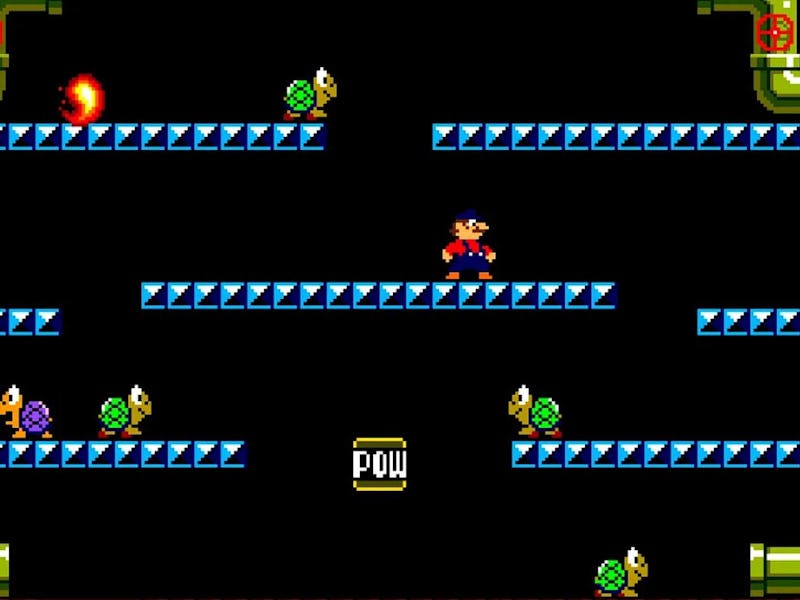Mario is the face of the best-selling video game franchise of all time. That’s something to be proud of for the plumber who started his career jumping over barrels thrown at him by a giant monkey. Though now has a long list of accomplishments such as golfer, doctor, and fighting professional, he had his humble roots in the sewers. 40 years ago, the now iconic mustachioed protagonist got top billing in his own game, and the world was changed forever.
The Mario Bros. arcade cabinet was originally released in North America and Japan in 1983. Details are fuzzy on when, though reports put it sometime between March and July. As an arcade game, Mario Bros. was centered around a repetitive gameplay loop of running around a three-tiered set of platforms with four green pipes in every corner of the screen. The goal is to defeat all of the odd creatures marching out of the pipes. This is accomplished by knocking them on their backs by hitting them from underneath.
The origin of Mario's greatest enemy: turtles.
In the center of the floor of the game lies the POW block which could be used three times to knock every enemy on the screen over. Players rack up points and hopefully progress through each phase successfully.
Designed by Donkey Kong lead developers Shigeru Miyamoto and Gunpei Yokoi, Mario Bros. was conceived of as a spinoff focused on the overall-wearing mustachioed man that had been dubbed Mario, after Nintendo of America’s warehouse landlord Mario Segale. Originally conceived as a carpenter, to make the construction site setting of Donkey Kong make sense, Miyamoto thought the overalls were more in line with a plumber. Thus, Mario became a plumber and the Mario Bros. game would reflect this change of occupation, taking place in the sewers in Mario’s hometown of New York City.
But of course, the arcade game wasn’t just titled Mario, it is Mario Bros. The game also introduced the beloved brother of Mario, the green-clothed Luigi. Luigi was the second player's controllable character. Both brothers were given standout coloring, red and green, contrasted against the blue. This was due to the graphical limitations of the arcade cabinet — the bright color helped animations like arm movements stand out and be more readable to the player. How else would we see Mario’s iconic jumping, with his arms pumping into the air?
Mario’s iconic status is still rooted in his old plumbing days.
Months after the introduction of the arcade cabinet version of Mario Bros. Nintendo would enter Japanese homes in 1983 with the Famicom. The success of the arcade cabinet led to Mario Bros. receiving a port to the Famicom. When the Famicom was released in North America as the Nintendo Entertainment System in 1985, Nintendo brought a new version of Mario to the system as well. Miyamoto wasn’t done with Mario and created a new game inspired by what he called “athletic games” or platforming games as they are more commonly referred to. This would become Super Mario Bros.
Mario Bros. was in itself a successful and well-received game, becoming one of the most popular arcade cabinets in Japan and the U.S. in 1983. The game was confined to the arcade cabinet mentality of getting quarters from players, and all took place within one screen, yet it helped define so much of who and what Mario was. The plumber, the outfit, animations, and basic gameplay of jumping to defeat enemies.
While incredibly simplistic compared to something like Super Mario Odyssey, there is a distinct lineage from the root of the tree to the newest branches. Though not the first appearance of Mario, and not the biggest breakthrough that helped make the character the icon he is today, Mario Bros. is the most important link between it all.
